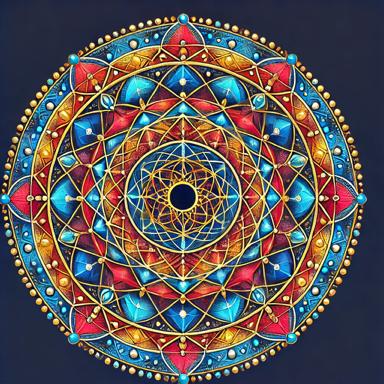Shoonyata
Shoonyata: The Profound Indian Concept of Emptiness

Shoonyata (Śūnyatā in Sanskrit) is one of the most profound philosophical concepts to emerge from ancient India. Often translated as “emptiness” or “voidness,” it challenges ordinary perceptions of reality by inviting us to see beyond surface appearances. Rooted in Buddhist philosophy, it has also influenced Hinduism, Jainism, and modern contemplative practices. This blog explores Shoonyata’s origins, significance, and applications in both ancient and contemporary thought.
What is Shoonyata?
The term Shoonyata comes from the Sanskrit word śūnya, meaning “empty” or “void,” and tā, denoting a state or condition. However, this “emptiness” does not imply a lack of meaning or existence. Instead, it refers to the absence of an independent, unchanging essence in all things. By emphasizing impermanence (anicca) and non-self (anatta), Shoonyata asserts that all phenomena arise due to interdependent causes and conditions. This insight forms the core of Buddhist philosophy and meditation practices.
Shoonyata in Buddhism
Shoonyata is central to Buddhist thought, offering profound insights into the nature of reality. Here are some ways it manifests in various Buddhist traditions:
- Theravāda Buddhism: Shoonyata is linked to anatta (non-self), explaining that the five aggregates—form, sensation, perception, mental formations, and consciousness—lack a permanent essence. Recognizing this emptiness helps reduce clinging and suffering.
- Mahayana Buddhism: Building on the teachings of the 2nd-century philosopher Nagarjuna, Mahayana argues that all phenomena lack intrinsic nature (svabhava). This “middle way” avoids extremes of eternalism and nihilism, pointing to ultimate truth (paramartha) beyond dualities.
- Zen Buddhism: Zen practice embodies Shoonyata through direct experience and simplicity. The Enso (circle) symbolizes the void, representing enlightenment, emptiness, and the infinite.

Shoonyata in Hinduism
Though closely associated with Buddhism, Shoonyata-like concepts appear in Hindu philosophy as well:
- Advaita Vedanta: This non-dualistic school posits Brahman as the ultimate reality, beyond all dualities. The idea of maya (illusion) parallels Shoonyata by suggesting the phenomenal world is not ultimately real, though Advaita emphasizes an unchanging consciousness beyond the void.
- Shaivism and Tantra: In certain Shaivite and Tantric traditions, the “Great Void” (Maha Shoonya) is seen as a space of infinite potential, where dualities dissolve and the self merges with cosmic essence.
Shoonyata in Jainism
Jain philosophy offers a unique interpretation of emptiness. While the soul (jiva) is considered eternal, Jain thought’s emphasis on relativity (anekantavada) resonates with Shoonyata by rejecting absolute truths. This approach encourages multiple perspectives, acknowledging the limitations of language and perception.
Modern Relevance of Shoonyata
Shoonyata offers timeless insights that resonate with contemporary challenges, reminding us of the interdependence of all beings and the impermanence of material attachments. Here are a few modern applications:
- Mindfulness and Meditation: Meditating on emptiness fosters detachment, reduces suffering, and promotes inner peace.
- Science and Shoonyata: Quantum physics’ exploration of particles lacking fixed existence aligns with Nagarjuna’s teachings on emptiness.
- Sustainability: Recognizing interdependence encourages more sustainable choices, benefiting both humanity and the planet.

Key Takeaways
- Shoonyata teaches that nothing has an independent essence.
- It is a path to liberation, helping individuals transcend suffering and illusion.
- The concept bridges ancient philosophy and modern science, guiding mindfulness and sustainability.
Conclusion
Shoonyata, the ancient Indian concept of emptiness, is not about negation but about understanding the true nature of existence. By recognizing the absence of any permanent essence, we can cultivate compassion, wisdom, and a harmonious way of living. Its timeless teachings continue to inspire seekers worldwide, inviting them to explore the depth of reality and the essence of being.
